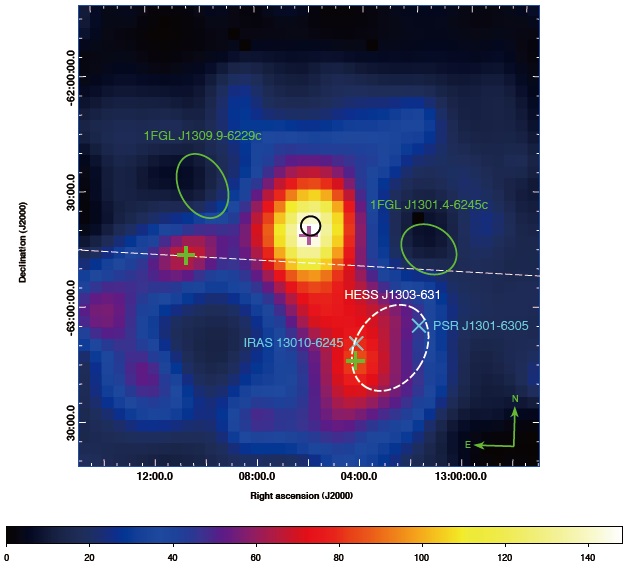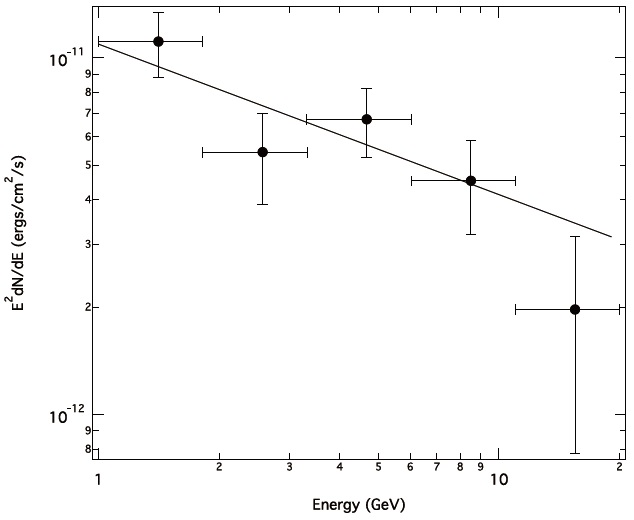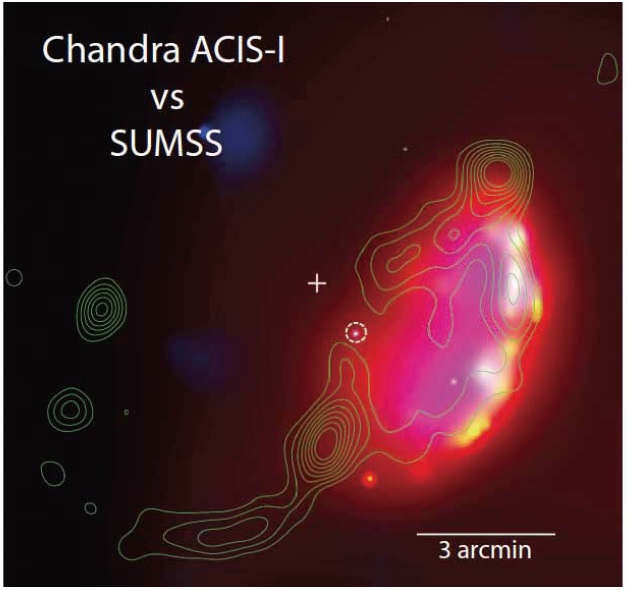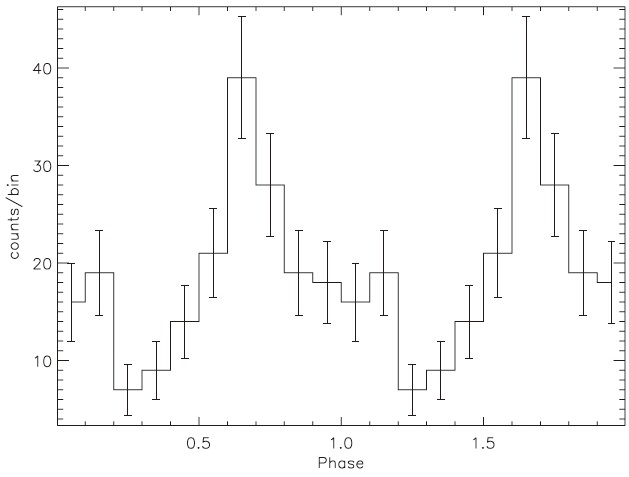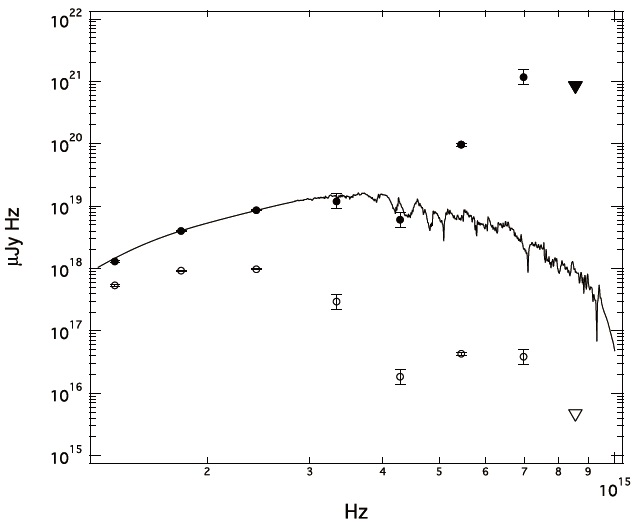



Here we review the effort of Fermi Asian Network (FAN) in exploring the supernova remnants (SNRs) with state-of-art high energy observatories, including Fermi Gamma-ray Space Telescope and Chandra X-ray Observatory, in the period of 2011-2012. Utilizing the data from Fermi LAT, we have discovered the GeV emission at the position of the Galactic SNR Kes 17 which provides evidence for the hadronic acceleration. Our study also sheds light on the propagation of cosmic rays from their acceleration site to the intersteller medium. We have also launched an identification campaign of SNR candidates in the Milky Way, in which a new SNR G308.3-1.4 have been uncovered with our Chandra observation. Apart from the remnant, we have also discovered an associated compact object at its center. The multiwavelength properties of this X-ray source suggest it can possibly be the compact binary that survived a supernova explosion.
There are many reasons for supernovae (SNe) and their remnants remain to be major interest for many high energy observers. SN is one of the most energetic events in our Galaxy, which sents out a shock front that provides a promising site for particle acceleration. Therefore, supernova remnants (SNRs) have long been suggested to be the promising sites for accelerating Galactic cosmicrays (GCRs) (Baade & Zwicky 1934). While many SNRs have their shock-heated plasma been detected by various X-ray telescopes, a small group of them has their X-ray emission found to be non-thermal dominant at their peripherals (cf. Weisskopf & Hughes 2006), which is resulted from the synchrotron radiation by the accelerated leptons at the shock fronts. These leptons are typically accelerated to the energies ?100 TeV (e.g. Reynolds & Keohane 1999, Hendrick & Reynolds 2001, Eriksen et al. 2011). However, they are not sufficient to account for the energetics as well as the composition of observed GCRs which contain a considerable fraction of hadrons (i.e. proton and heavy ions) up to the
Since relativistic protons are not efficient synchrotron emitters, X-ray observation can only infer their presence indirectly (e.g. Eriksen et al. 2011). On the other hand,
Thanks to the dedicated investigations carried out by the ground-based imaging atmospheric Cherenkov telescopes (e.g. H.E.S.S.), a group of SNRs have been detected in TeV regime (see Caprioli 2011 for a recent review). While these observations provided solid evidence for the presence of energetic particles, it is still difficult to disentangle various possible components (
On the other hand, the spectrum in the energy range between ~100 MeV to few tens of GeV has been expected to be rather different between hadronic/leptonic models (cf. Slane 2007). In view of this, the Large Area Telescope (LAT) onboard the
Considering SNRs as the accelerators of GCRs, it is necessary to ask whether they can account for the entire energy density of CRs in the Milky Way. This is related to the mechanical power provided by the SNe, which in turn related to their event rate. Since SNe inject an enormous amount of energy and metals in the interstellar medium (ISM), their intrinsic event rate also plays an important role in determining the dynamical and chemical evolution of the entire Galaxy.
Assuming a typical evolution timescale of SNRs before they merge with the ISM (~105 yrs) and a event rate of 2 SNe/century in the Milky Way (Dragicevich et al. 1999), ~2000 SNRs are expected in our Galaxy. However, the expected population is far larger than the currently known population which has ~300 SNRs uncovered so far (cf. Green 2009, Ferrand & Safi-Harb 2012). If the adopted event rate and our understanding of SNR evolution are correct, such great deficit is most likely due to the selection effects in the past radio surveys.
For complementing the radio observations, we would like to point out that the ROSAT all-sky survey (RASS) can provide us with an alternative window for searching SNRs in our Galaxy. In examining the RASS database, we have found ~100 unidentified extended X-ray sources as the possible SNR candidates. However, the short exposure of few hundred seconds and the poor spatial resolution in survey mode (~96”) prevent any firm identification of their nature.
Since enlarging the sample size of Galactic SNRs is important to reveal the true Galactic SN rate, starformation history, interstellar chemical evolution and thus overall Galactic evolution, we have recently initiated an identification campaign of SNR candidates by utilizing the state-of-art X-ray telescopes. Apart from discovering previously unknown SNRs, our on-going campaign also enables a search for the possible stellar remnant formed in the SN explosion. After more than four decades of neutron star (NS) research, many other manifestations of NSs besides rotation-powered pulsars have now been known. One particular class of NSs, which is known as central compact objects (CCOs), are characterized by their proximities to the SNR centers and their thermal-dominant X-ray spectra (Hui et al. 2006a,b, 2009, 2012, Mereghetti 2011). Since SNRs can only be detectable for ~105 yrs before they fade into the ISM, CCOs are thus considered to be a class of young NSs. There are only 11 CCOs have been uncovered so far (cf. Tab. 1 in Mereghetti 2011). Our X-ray campaign is promising in enlarging their sample size and lead to a better understanding of their emission properties.
2. DISCOVERY OF γ-RAY EMISSION FROM THE GALACTIC SNR KES 17
Kes 17 is one of the poorly-studied remnants. It was firstly detected in radio band (Shaver & Goss 1970). A subsequent hydrogen line interferometric study (Caswell et al. 1975) has placed a lower bound of < 9.7 kpc on its distance. Its irregular radio shell morphology suggests evidence for the collisions between the SNR shock front and its dense environment (Milne et al. 1985, Whiteoak & Green 1996). This scenario was supported by the detection of 1,720 MHz OH maser in its direction (Frail et al. 1996). In an infrared survey of SNRs in the inner region of Milky Way, Kes 17 was detected with the images obtained by
With the aforementioned data span, we have detected
For examining its
erg cm -2s-1 With the full energy range
of 1-20 GeV divided into 5 logarithmically equally-spaced energy bins, the binned spectrum is constructed from the indpendent fits of each bin which is displayed in Fig. 2. Besides a simple PL model, we have also examined if an exponential cutoff power-law (PLE) or a broken power-law (BKPL) can improve the fit. The fittings with PLE and BKPL yield the TS value of 146 and 145 respectively. Based on the likelihood ratio test, the additional spectral parameters in EPL/BKPL are not statistically required for describing the observed
In a scenario of runaway CR model (Ohira et al. 2011, Abdo et al. 2010), the MCs are illuminated by the CRs that escaped from the SNR in earlier epochs. If this is indeed the case, systems like Kes 17 can enable us to study how the CRs are released in SNRs as well as their propagation in the ISM. It is instructive to compare the spatial separation between the SW feature and Kes 17 with the CR diffusion. Assuming a diffusion coefficient of the CRs in the ISM to be
cm2s-1, where
~40 pc for the CRs with energies of ~10 GeV. At the distance of 9.7 kpc, this translates into an angular separation of ~0.3o which is at the same order to that between the SW feature and nominal center of Kes 17.
3. X-RAY IDENTIFICATION OF NEW SNR G308.3-1.4 AND ITS CENTRAL COMPACT OBJECT
Recently, we initiated an extensive identification campaign of unidentified extended RASS objects with G308.3-1.4 as our pilot target (Hui et al. 2012). G308.3-1.4 has already been known as a SNR candidate in the MOST SNR catalogue (Whiteoak 1992). But the limited photon statistics and the poor resolution of the RASS data do not allow any further probe of its X-ray emission properties. This has motivated us to observe G308.3-1.4 with
The X-ray color image of the field around G308.3-1.4 obtained by
respectively, where
the age of this SNR to be
yrs. A recent radio investigation has also resulted in the same conclusion and suggest G308.3-1.4 is a young to middle-aged SNR in the early adiabatic phase of evolution (De Horta et al. 2013).
Apart from confirming the SNR nature of G308.3-1.4, our
in a supernova explosion (Hui et al. 2012). Multiwavelength follow-up observations of this system are highly encouraged.
